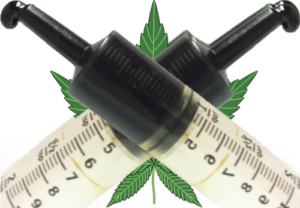What You Need To Know About Medical Marijuana
Not so long ago, the use of marijuana became so popular. People began using the plant for purposes other than high. The fact that marijuana relieves health conditions initiated the dialogue of the legalization of marijuana. Many states in the U.S have legalized marijuana for medical purpose, and more are still considering the bills or are in the process of legalizing it.

What is medical marijuana?
Marijuana is a plant that is cultivated for its numerous benefits. It contains over 100 different cannabinoids (chemicals). These chemicals have different effects on the body. It is these effects; they produce that is leveraged on in medical marijuana.
Medical marijuana utilizes two main chemicals in the marijuana plant. They are the Cannabidiol (CBD) and Delta-9-tetrahydrocannabinol (THC). These chemicals are used to treat diseases. So basically, instead of using the plant for a recreational purpose it is used to cure ailments.
Conditions
Medical marijuana is useful in the treatment of many diseases and disorders such as:
- Alzheimer’s disease
- Appetite loss
- Cancer
- Crohn’s disease
- Anorexia and other eating disorders
- Epilepsy
- Glaucoma
- Seizures
- Schizophrenia
- Posttraumatic stress disorder (PTSD)
- Multiple sclerosis
- Muscle spasms
- Nausea
- Pain
- Wasting syndrome (cachexia)
It is also effective in handling the following cancer treatment-induced conditions:
- Pain
- Nausea And Vomiting
- Hot Flashes
- Loss of Appetite
- Anxiety
- Insomnia
However, it is important to mention that there are still ongoing researches focused on identifying more medical applications of marijuana.
Forms
Interestingly, marijuana products come in many different forms, making the intake and use more user-friendly. The forms include:
- Edibles – cookies, candy, mints, or brownies.
- Dried leaves or buds for smoking.
- Oils for vaporing or mixing into tea, honey, or other food.
- Creams and other topical products.
- Sprays or tinctures, used under the tongue or along the gum line.
Therefore, depending on what works best for you, you can smoke, apply, inhale, swallow, eat or drink medical marijuana. Choose the method that suits you, but if you want a quick effect, vaping and smoking are the best options. Edibles take a little longer time to act in the body.

How medical marijuana works?
Remember cannabinoids (the over 100 different chemicals contained in marijuana plant), and the active chemicals in medical marijuana? They are very similar to the chemicals produced by the body for appetite, memory, pain, and movement. This is why medical marijuana helps with related disease conditions.
Research suggests that these chemicals do the following:
– Stimulate appetite
– Stimulate weight gain
– Reduce anxiety
– Relieve pain
– Reduce inflammation
– Controls nausea and vomiting, especially ones caused by chemotherapy
– Slows down the growth of tumor
– Kills cancer cells
Which states allow medical marijuana?
It will surprise you to know that in more than half of the states in the U.S, the use of marijuana for medical purpose is legal.
How to get medical marijuana?
Though legalized, you won’t just find marijuana lying around. There is a procedure for getting it. Just like other prescription drugs, you will need a recommendation form from licensed marijuana doctors in your area. To get this recommendation, you have to meet the criteria or qualifying conditions. These conditions vary from state to state. In some states, you may need a medical marijuana ID card, which is a pass to purchase medical marijuana from any dispensary.
Is medical marijuana FDA approved?
So far, some man-made cannabinoid medicines have been approved by the FDA. These drugs Dronabinol (Marinol, Syndros) and Nabilone (Cesamet) are used for the treatment of nausea and vomiting induced by chemotherapy. Epidiolex has also been approved for treating Lennox-Gastaut syndrome and Dravet syndrome, two severe and rare forms of epilepsy.
Side effects
You may be wondering if there are side effects associated with the use of medical marijuana. Well, there have been reports of some side effects like:
– Fast heartbeat
– Dizziness
– Hallucinations
– Bloodshot eyes
– Depression
– Low blood pressure
These effects occur when people take large doses of medical marijuana. Some short term side effects which last about 1 to 3 hours include mood swings, happy feeling, sleepiness, anxiety, relaxed feeling and disruption of short-term memory.
Those who smoke marijuana for a long time are prone to developing respiratory issues like the risk of lung infections, and daily coughing. Regular smoking of medical marijuana has also been linked to mental illness, depression, low motivation, suicidal thoughts, and anxiety, especially among young people.
Use of marijuana during pregnancy is not advisable. Generally, marijuana is addictive, so it must be used based on your Doctor’s recommendation.
What’s more?
The effect of medical marijuana on everyone is unique, but you will find one that suits you.